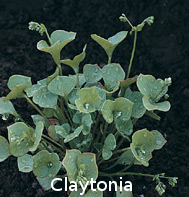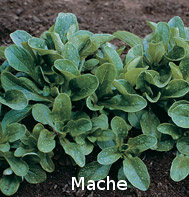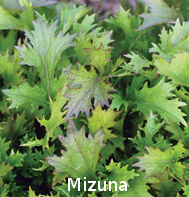
What to plant for a winter harvest
 Eliot
Coleman experimented with dozens of
types of cool season vegetables to discover the ones that work best for
winter harvest. His overall winner --- and the crop to which he
devotes half of his greenhouse space during the cold season --- is spinach. I've played with
spinach a bit and ended up mainly deleting it from our cycle since I
felt it wasn't as cold hardy as kale, the leaves were slow to pick
compared to other greens, and its germination can be quite
spotty. However, spinach has the benefit of being willing to put
out new leaves all winter, while even the most cold hardy crucifers
like kale just sit dormant during the darkest months. Clearly,
spinach is worth another try.
Eliot
Coleman experimented with dozens of
types of cool season vegetables to discover the ones that work best for
winter harvest. His overall winner --- and the crop to which he
devotes half of his greenhouse space during the cold season --- is spinach. I've played with
spinach a bit and ended up mainly deleting it from our cycle since I
felt it wasn't as cold hardy as kale, the leaves were slow to pick
compared to other greens, and its germination can be quite
spotty. However, spinach has the benefit of being willing to put
out new leaves all winter, while even the most cold hardy crucifers
like kale just sit dormant during the darkest months. Clearly,
spinach is worth another try.
Coleman's other top
winter crops are listed below:
 Mache
is a hardy salad
green that grows all winter like spinach. Unlike spinach, though,
you have to succession plant mache since you harvest the entire plant
rather than snipping off leaves.
Mache
is a hardy salad
green that grows all winter like spinach. Unlike spinach, though,
you have to succession plant mache since you harvest the entire plant
rather than snipping off leaves.- Leeks are a year-round crop for Coleman. I consider leeks too nitpicky for our garden when we can get the same results with less work using Egyptian onions, but The Winter Harvest Handbook reminded me that growing Egyptian onions inside a quick hoop would probably turn this nearly evergreen crop into a true all-winter producer.
- Claytonia is another very cold-hardy salad green.
- Asian greens --- specifically mizuna, mibuna, tatsoi, pak choi, and tokyo bekana --- are among Coleman's favorites, again due to their hardiness.
- Lettuce is listed as less hardy than many of the other crops, making me think that we could extend our winter salad season by a month or two just by swapping crops. Although lettuce has no problem growing with only eight hours of sunlight per day, cool soil temperatures slow it down considerably.
 Kale can
be used as both
a salad green (for which he prefers Dwarf Scotch Curled Kale) or as a
cooking green (for which he prefers Tuscan Kale.)
Kale can
be used as both
a salad green (for which he prefers Dwarf Scotch Curled Kale) or as a
cooking green (for which he prefers Tuscan Kale.)- Carrots are part of his fresh-from-the-garden harvest from October through February. Although they can keep longer, he's noticed (as have I) that once the top growth begins in the spring, the flavor declines markedly. Coleman plants Napoli for winter harvest, then another crop of Nelson carrots in late December for an early spring crop.
- Turnips are a favorite of his customers, so he grows them even though they only last until Christmas in his greenhouse. Hakurei is his favorite variety for sweet roots and tasty greens.
As you can see, the
majority of the winter harvest is salad and cooking
greens, but anything fresh from the garden tastes better than the most
carefully frozen summer bounty by February. I've read blogs of
homesteaders who nearly delete their stockpile of summer goodies,
instead relying on the bounty of the winter garden to feed them during
the cold months. Although I'm not ready to give up my freezer of
corn, beans, squash, and tomatoes, I hope that next year's cold season
will bring more fresh food from the garden to our plates.
| This post is part of our Winter Harvest Handbook lunchtime series.
Read all of the entries: |
Want more in-depth information? Browse through our books.
Or explore more posts by date or by subject.
About us: Anna Hess and Mark Hamilton spent over a decade living self-sufficiently in the mountains of Virginia before moving north to start over from scratch in the foothills of Ohio. They've experimented with permaculture, no-till gardening, trailersteading, home-based microbusinesses and much more, writing about their adventures in both blogs and books.
Want to be notified when new comments are posted on this page? Click on the RSS button after you add a comment to subscribe to the comment feed, or simply check the box beside "email replies to me" while writing your comment.
